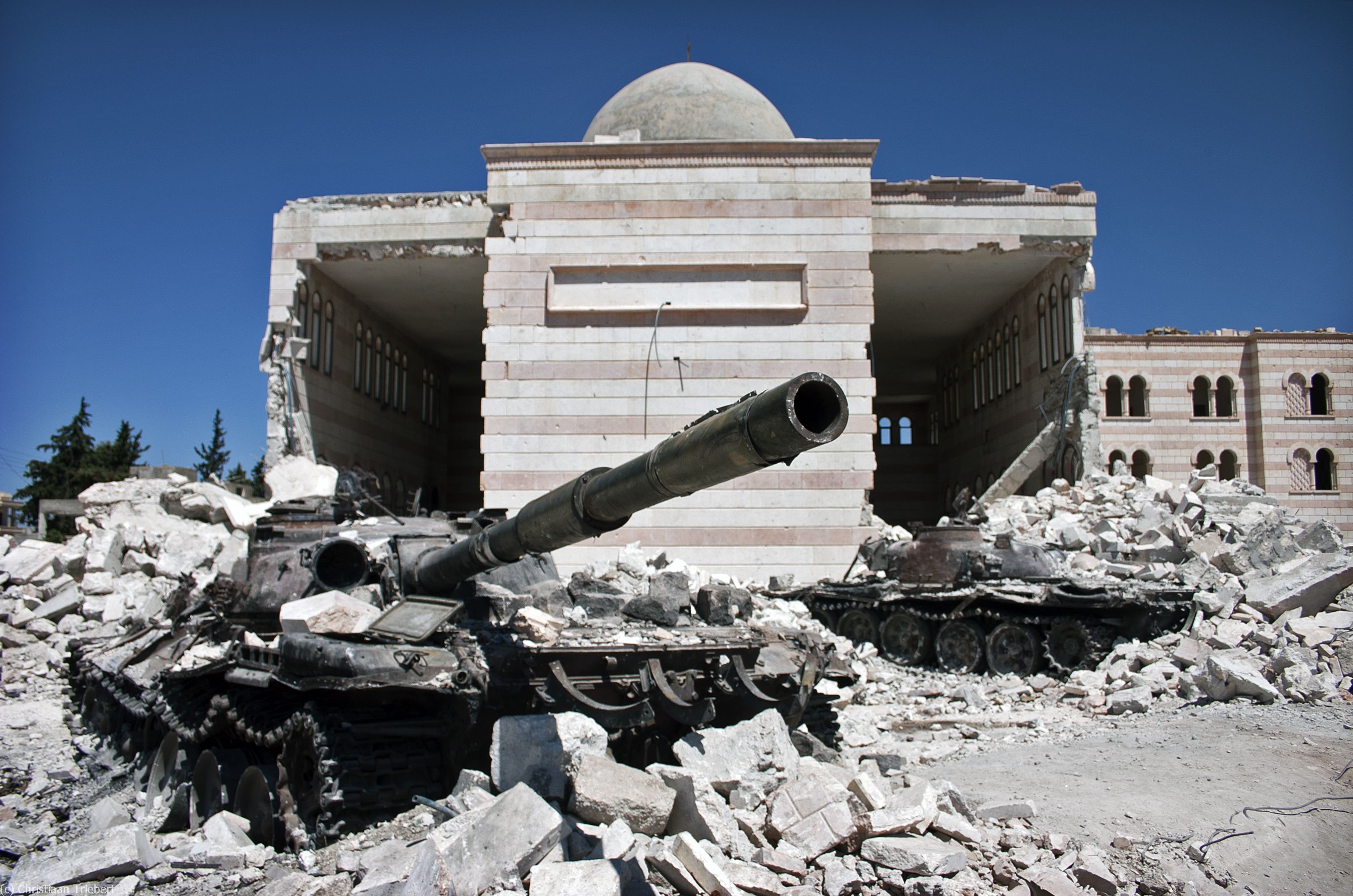The greatest problem facing the Middle East today is the prevalence of failed states. These states lack the capacity to govern, police, and protect the entirety of their territories and peoples. The result is civil conflict, widespread violence, and porous borders. Saudi Arabia’s bombing campaign in Yemen, the Islamic State in Iraq and the Levant’s (ISIL) success in Iraq and Syria, Libya’s civil war, Hezbollah in Lebanon, Hamas in Palestine, and Europe’s refugee crisis are all direct results of failed states. Of course the most threatening problem for the United States resulting from failed states in the Middle East is terrorism.
Before many of these states failed, they were ruled by brutal authoritarians. Saddam Hussein ruled Iraq for over 20 years, and in that time, the Iraqi government tortured civilians (“gouging out of eyes, severe beatings, and electric shocks”), beheaded political opponents, used chemical weapons against Iran and its own Kurdish population, and executed thousands of political rivals. Muammar Gaddafi ruled Libya for over 40 years and similarly repressed his people until he was overthrown in 2011. His final orders as Libya’s leader unleashed his army and air force upon his citizens. The story is hardly different for Bashar al-Assad, who is still clinging to power in regions of Syria.
Many in the United States were therefore happy to see regimes toppled in Iraq, Libya, Tunisia, Yemen, and Egypt and encouraged the Obama administration to do more in Syria and Iran. The Arab Spring was viewed by many as oppressed peoples breaking their own shackles, and many assumed (and hoped) democracy would follow. It didn’t. What followed was the proliferation of militias, a dramatic rise in terrorism, and a reinvigorated Sunni-Shia divide. The violence prevailing in the Middle East today now forces many to question whether the tyrants before the Arab Spring were worse than the terrorists who followed.
Instability is the rock and authoritarianism the hard place between which U.S. policymakers find themselves in the Middle East. Instability gives safe haven to terrorist organizations, fighting ground to extremist militias, and hope to international jihadists. Authoritarianism suppresses the civil liberties and opportunities of the majority while victimizing minorities. Faced with only these two options in the Middle East, the United States is trying to combat both. Nonetheless, it does not want to supply a large military presence in the region. The United States cannot have stability, Westernized governance, and a small military footprint. Something has to give.
The United States has not yet picked which of these three goals should give, although the overall objective is clear – turn failed states into strong states. On June 17, Secretary of Defense Ashton Carter and Chairman of the Joint Chiefs of Staff General Martin Dempsey briefed the House Armed Services Committee on the U.S. policy for the Middle East. In this briefing, Carter listed “nine lines of effort:”
- Build strong and inclusive political institutions in Iraq
- Deny ISIL safe haven
- Build partnership capacity in Iraq and Syria
- Enhance intelligence collection on ISIL
- Disrupt ISIL’s finances
- Counter ISIL’s messaging
- Disrupt foreign jihadists
- Provide humanitarian support to displaced persons
- Thwart domestic attacks (against the United States)
These nine lines would essentially provide many of the institutions these failed states cannot – inclusive governance, defense from invasion, domestic policing, and relief aid.
These are the same functions U.S. troops performed after the invasions of Iraq and Afghanistan. The United States hoped to do in these states what it had done in post-WWII Germany and Japan, in which it took two war-ravaged countries and turned them into constitutional republics with fair elections and modern economies. However, the post-war U.S. efforts in Iraq and Afghanistan pale in comparison to the post-war U.S. effort in Germany and Japan.
U.S. State Building
The United States, along with France and the United Kingdom, occupied West Germany immediately after the conclusion of WWII (the Soviet Union occupied East Germany). U.S. troops stayed for decades. The United States encouraged integration amongst Western European nations, funded regional recovery through the Marshall Plan, and bolstered international institutions such as NATO. Thus in West Germany, the United States provided security, stability, political reform, and economic assistance in unison, freeing the nascent domestic government to focus exclusively on developing governance.
The United States also occupied Japan immediately after WWII, and here, too, the United States troops stayed for decades. The United States rewrote the entire political system, implemented tax reforms, and utilized supply depots in Japan and Okinawa for its military’s use when waging war in Korea and Vietnam. Once again, the United States externally fulfilled a state’s domestic roles: providing security, stability, political reform, and economic assistance.
Compare these sustained state building efforts to what was done in Iraq and Afghanistan. “Generally, in Iraq and Afghanistan, the United States has engaged in limited state-building rather than nation-building,” writes Adil Shamoo, a senior analyst at Foreign Policy in Focus. “U.S. efforts, so far, have concentrated on building the security infrastructure. This infrastructure of military and police serves to provide security and prop up U.S.-friendly governments rather than build the political and economic infrastructure for sustainable economic reconstruction and democratic institutions.”
“The Taliban insurgency feeds on the condition of inept and corrupt governance.”
Echoing this, Vanda Felbab-Brown, a senior fellow in the Foreign Policy program at the Brookings Institution, writes, “The Bush administration’s economy-of-force, minimal-input approach for Afghanistan…left a structural environment in Afghanistan that motivated national and local powerbrokers to return to their ways of narrowly pursuing immediate power and profit maximization at the expense of building effective and accountable governance. Although the Obama administration tried to reverse these negative dynamics, its imposition of a time limit on the deployment of U.S. forces only reinforced the short-term, what’s-in-it-for-me calculus of the Afghan powerbrokers…The Taliban insurgency feeds on the condition of inept and corrupt governance; yet the United States and its international partners have been unable to induce better governance from the Afghan government and unofficial powerbrokers.”
Whereas U.S. troops stayed in Germany and Japan for decades, there was a clear desire in Iraq and Afghanistan to pull troops out. Whereas state building in Germany and Japan focused on political and economic development, state building in Iraq and Afghanistan focused on security and counterinsurgency. For these reasons, state building in Iraq and Afghanistan has failed.
There is a simple explanation for U.S. endurance in Germany and Japan: the Cold War. The U.S. fear of Soviet expansion – a strong Germany to bolster the West, and a strong Japan to reinforce the East – played a much greater role in its efforts to assist Western Europe and Japan than concern for Germans or Japanese. To thwart communism’s spread, the United States propped its security umbrella over Western Europe and Japan, instituted political institutions that were counter to communism, and spurred economic growth to prevent “communist subversion.” U.S. commitment in Germany and Japan reflected the nation’s commitment to fighting communism everywhere and were considered vital to U.S. security concerns. The hefty U.S. expenses there were thus easily justified. The perceived threats to U.S. security in Iraq and Afghanistan, on the other hand, were Saddam Hussein’s alleged WMD program and Afghanistan’s harboring of terrorists. Once the United States toppled Hussein and ousted the Taliban, it was then difficult to justify additional expenses of money or manpower to Iraq or Afghanistan.
The United States cannot be an effective state-maker in the Middle East, then, because it lacks the security impetus to justify the decades-long expenses of externally imposing security, stability, political reform, and economic assistance there.
Back to the Middle East
If failed states are the main problem in the Middle East and the United States lacks a vital interest in the region to motivate sustained and costly state building efforts, the U.S. is left with only two options. It can either support the existing states’ efforts to expand into the failed states or allow local militias to fight it out for control of the failed states. If the former, the United States would support repressive regimes such as Saudi Arabia, Iran, and Turkey; if the latter, the United States would idly observe years of brutal civil wars.
Once again, neither option is attractive, and the United States is trying to do both. The United States has supported Saudi airstrikes in Yemen and Iranian militias in Iraq while also denouncing Assad and supporting Syrian rebels. The United States needs to pick a lane and start driving. Either assist the expansion of existing regimes into failed states, or wait to see who emerges from the survival-of-the-fittest contest between militias in the failed states. It cannot do both.
The Department of State Annual Country Reports on Terrorism (the most recent released in June 2015) details the devastating impact of terrorism regionally and globally. Over the last ten years, 707,377 people have been killed, injured, or taken hostage in terrorist attacks. This figure does not take into account the millions displaced by this violence or the relatives of the over 700,000 directly affected by terrorism.
Between January and May of 2015 alone, more than 1,800 migrants drowned in the Mediterranean Sea, many of them emigrants from Libya and Tunisia trying to escape the violence their failed states’ cannot stop. Massive flows of emigrants also threaten the stability of non-failed states. Jordan has received over 1.4 million Syrian refugees over the last four years. That would be a burden on any population, but for Jordan, the influx of Syrian refugees is equivalent to 18 percent of the entire population.
If militias and terrorist networks are left to duke it out in these failed states, terrorism will continue its rise, emigrants will continue their exodus, and the number of failed states may grow as the zones of conflict expand. When choosing between tyrants or terrorists, the United States should choose tyrants. The United States must continue its efforts to combat ISIL and other extremist militias and accept that this will mean giving authoritarian regimes more power and territory in the region.
Perhaps a region populated fully by strong states and devoid of safe havens for terrorists, extremists, and militias will be more conducive to an Arab Spring than the Middle East we see today. In that region, the United States can work against tyrants. In today’s region, however, it must work with tyrants against terrorists.
-By William Robinson/Photo Credit: Christiaan Triebert, Wikipedia Reuters/Data: U.S. Department of State, National Consortium for the Study of Terrorism and Responses to Terrorism


